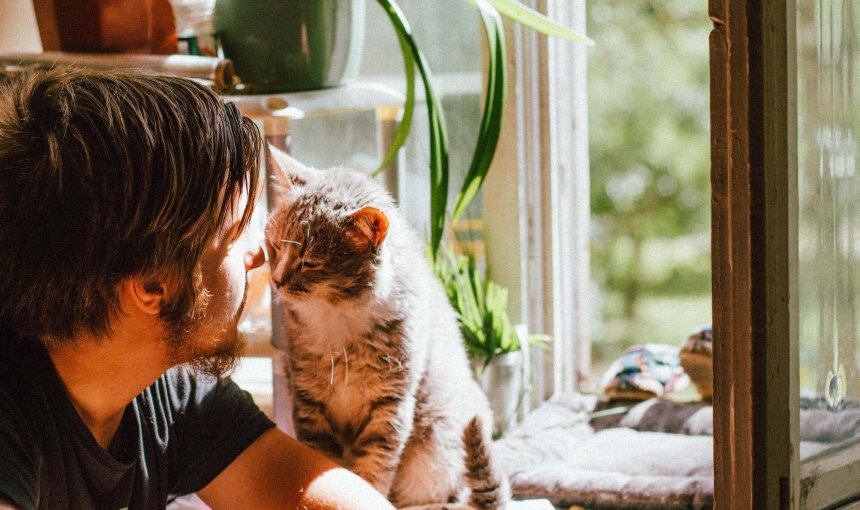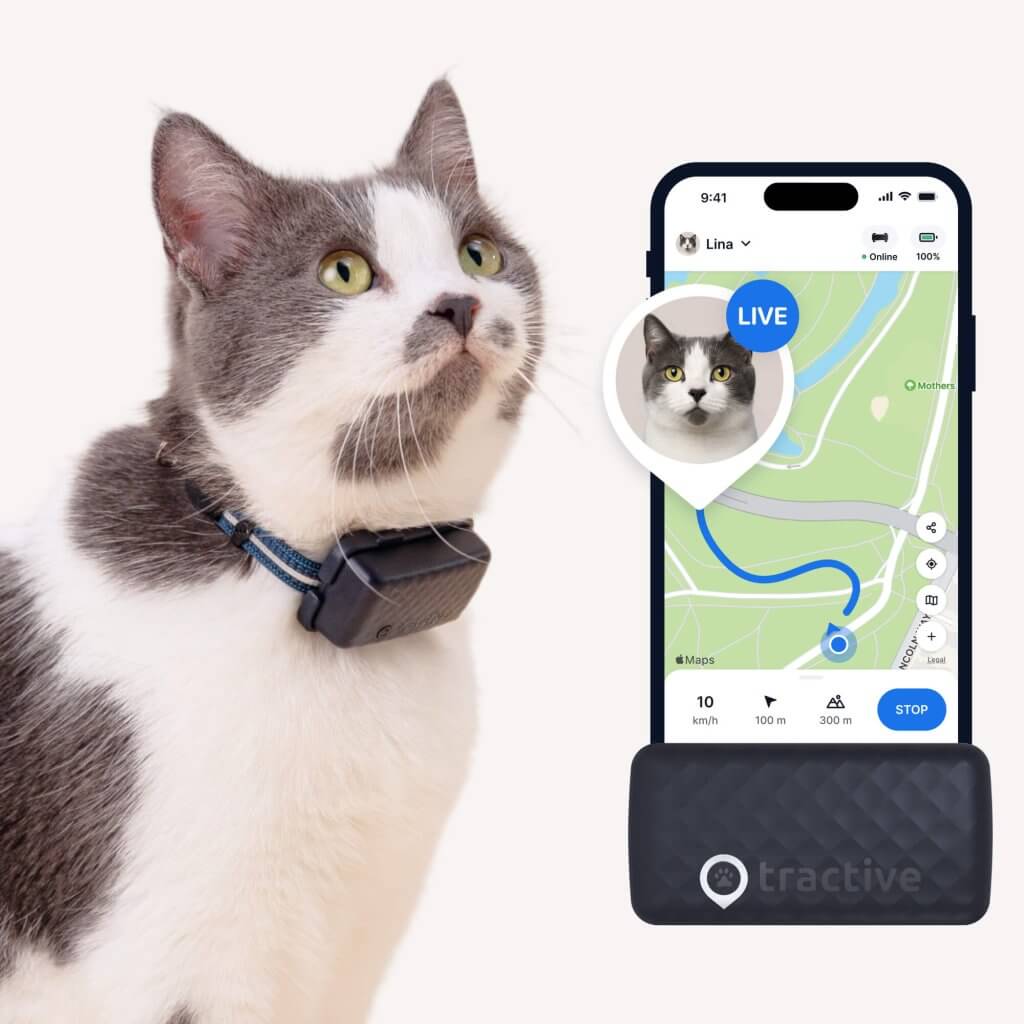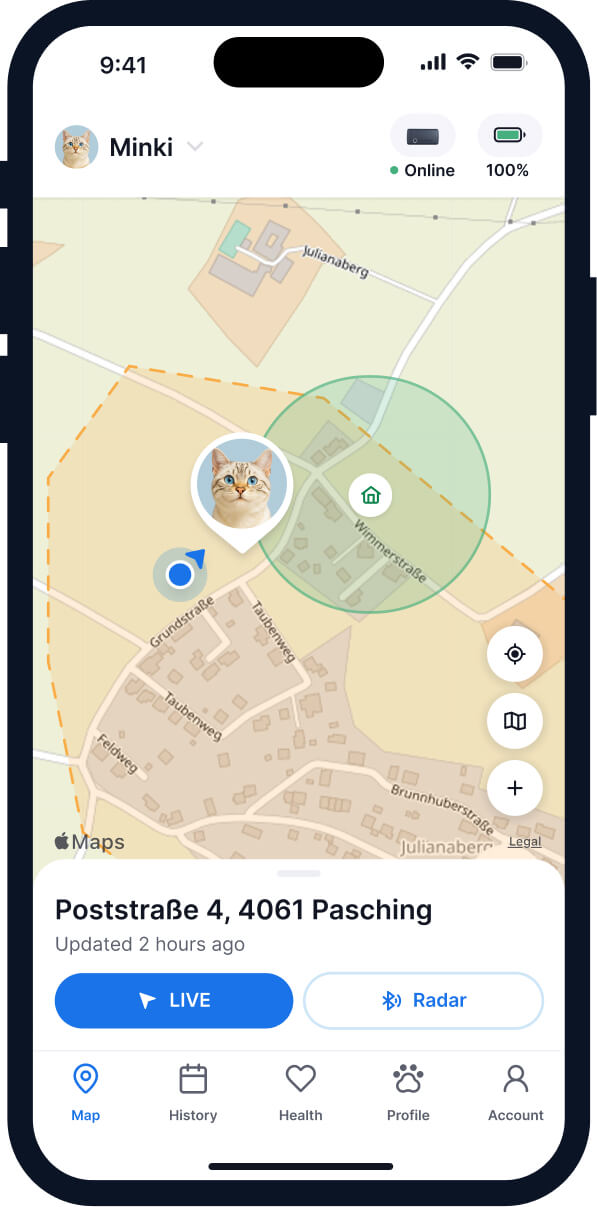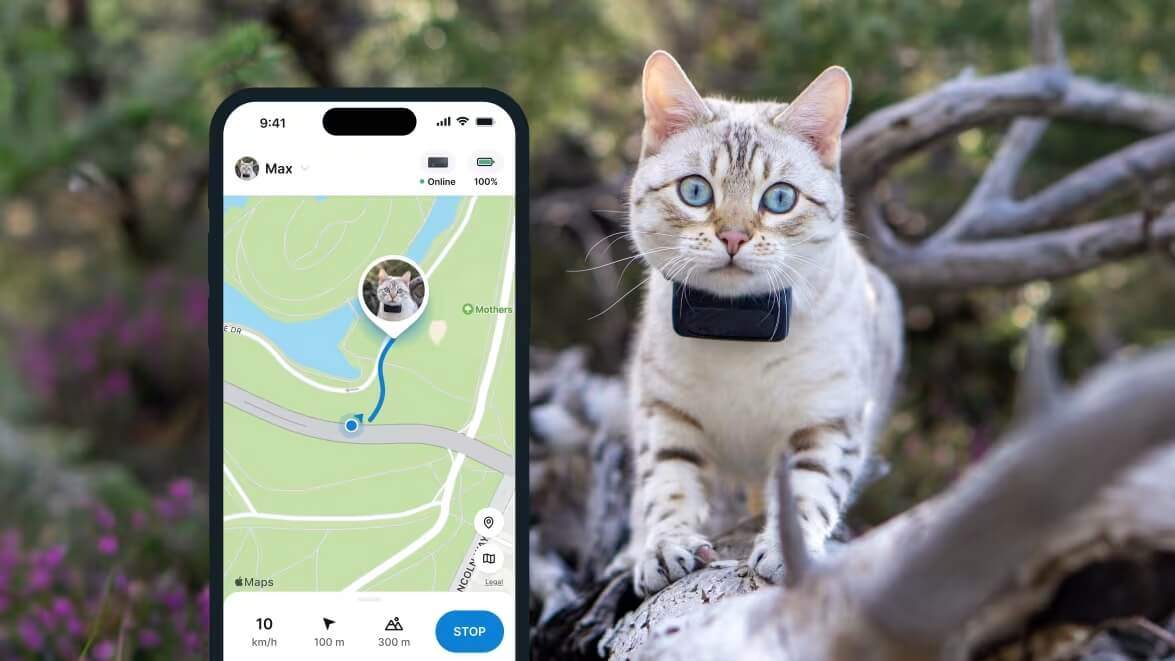Moving With Cats: Your 100% Stress-Free Guide
Shifting apartments can be stressful for anyone - and especially your cat! Because if your little buddy doesn't feel 100% safe in their new environment, you're more likely to find them hiding - or in the middle of an escape attempt. So here are some tips for a stress-free moving experience.

Moving with cats can be pretty challenging. When cats don’t feel 100% safe in their new surroundings, they’re more likely to act out. Meaning, yowling, hiding, scratching furniture – or even running away. But with a little patience, love, time, and effort, your cat can settle into their new home very well. Even better if you can stay on top of their hiding and escaping behaviors, by following their every step.

Find out where your cat spends their time.
Read moreMoving with cats: How to get started
- Get them used to the carrier
Don’t let moving day be the first time your cat sees their carrier in months. Bring it out early, line it with cozy bedding, and toss in a treat or two. Let your cat explore it at their own pace. You can even leave it open in their favorite nap spot. This can make it feel like just another piece of furniture. - Pack gradually
Start packing in phases so the change doesn’t feel so overwhelming. Leave your cat’s favorite items – like their bed, toys, and scratching post – until the very end. This helps maintain a sense of normalcy. - Help your cat relax before the move
Before the move, gather some of your cat’s blankets or toys that smell like home. Use a pheromone spray or diffuser (like Feliway) to help calm their nerves in both the old and new environments. Else, check in with your vet if your cat gets anxious or has a history of travel issues. They might recommend calming supplements or a mild sedative to help them relax. - Update your cat’s microchip & collar info
Moving with cats means a new address – so don’t forget to update your cat’s ID tags and microchip details. Even better? Equip your cat with a smart GPS & health tracker like Tractive, so if they bolt out the door during the chaos, you’ll know exactly where they are in real-time.

Track your cat wherever they go
See where they are in real-time, no matter how far they roam. Discover their territory. Get alerted if they go too far. Track activity, sleep, and receive health alerts if your cat’s activity changes. Keep your feline friend healthy and safe.
What to do on moving day
Before the moving truck pulls up, place your cat in a quiet room with their carrier, food, water, litter box, and favorite blanket. Check in occasionally to offer comfort and ensure their needs are met.
- Keep your cat calm during transport
Give the inside of the carrier a light spritz of pheromone spray before placing your cat inside. Covering the carrier with a towel or blanket can also create a more soothing environment during the ride. - Don’t open the carrier on the road
It might be tempting to comfort your cat mid-ride, but resist the urge. Opening the carrier in a car is a recipe for a feline freakout (and possibly a scratched-up dashboard). Make sure the carrier is securely closed and seat-belted in place to keep your cat safe throughout the trip. - Monitor your cat’s behavior
Keep an eye out for signs of extreme distress, like excessive meowing, panting, or drooling. Even the most well-behaved cat might have an accident due to stress. Line the carrier with absorbent pads, and have pet-safe wipes and a spare blanket or towel on hand just in case.
Read more: How To Travel With A Cat: Tips For A Fun, Safe Road Journey
How to help your cat settle in to their new home
Let your cat explore one room at a time. Their new surroundings can be overwhelming at first. (Especially since it’s a newer, bigger space with unfamiliar sounds and smells.) Stick around so they don’t feel like you’ve abandoned them somewhere unfamiliar. Also:
- Try and stick to your routine
The more predictable things are, the faster your cat will feel at home. Try to maintain the same food, litter, and daily rituals for at least the first couple of weeks. - Set up a room for your cat
Including their favorite toys, basket, crate, or blanket, or even a towel with your scent. Place these in your cat’s new sleeping area to help them feel a bit more comfortable in their new surroundings. - Give your cat a hiding spot
Always leave some furniture in the room where they can hide when they feel a bit antsy. (Like chairs or boxes.) Likewise, don’t remove your cat’s carrier from the room just yet. It can actually be a hiding spot they can scamper to. - Don’t confine your cat to any room
It’ll majorly stress them out – and result in some heavy scratches on your new apartment doors. Besides, if they’re an outdoor cat, they’re unlikely to enjoy too much indoor time either. - Be firm when introducing “no go” zones
Besides narrow, hard to escape from spaces, your kitchen, for example, might include food items that are toxic for cats. So be firm (but not harsh or panicky) when your cat wanders off towards “no go” areas. Give them a little nudge or a firm “No!” when necessary. A gentle spritz of water can also help.
Every cat reacts differently. Some may be prowling the halls in a day. Others might take a week to peek out from under the bed. Let your cat adjust at their own pace. Talk to them softly, spend time in their safe space, and don’t force interactions. With gentle encouragement, they’ll come around.
⚠️ Just watch for signs of stress such as hiding, loss of appetite, or over-grooming. These can be normal reactions to a big change, but if they persist beyond a few days, get in touch with your vet.
How to introduce your cat to their new outdoors
Experts actually suggest you keep your cat inside for about 3 weeks before letting them go outside. The stress of an unfamiliar environment may cause your cat to run away. (Maybe even back to your older apartment or home!) Which is why, when you’re moving with cats, it’s smart to introduce them to the new outdoors, step by step.
- Start with supervised outdoors time
If you stay close, they gradually learn that the outdoors is a “safe” space. Get some playtime in your garden or backyard to help your cat slowly settle into it. (It’ll become their territory in no time.) Just make sure to watch out for any plants that are poisonous for cats. - Learn your cat’s favorite hiding (or hangout) spots
As your cat slowly grows familiar with their new outdoor space, you’ll find them spending more of their time in certain spots. In fact, over time, your backyard – and part of your neighborhood – might just end up as part of an outdoor cat’s territory. Which may seem cute – until you realize your cat is busy invading your neighbors’ yards or picking a fight with the local pets.
💡 That’s why it makes sense to keep track of their favorite spots – whether that’s for hiding or just hanging out. Even better if you can figure out their territory – with just a glance at your phone.

Where a smart cat collar can come in handy
Once you open up the doors (and windows) in your new home, your cat might be extra curious – and a little disoriented. That’s where a Tractive GPS tracker for cats comes in handy. Whether your cat is adjusting to a new backyard or sneaking into the neighbor’s garage, you’ll be able to see their location at any time, right from your phone.

Here’s what you get with it strapped to your cat’s collar:
- Real-time location tracking
With LIVE mode, so you can follow your cat’s every step – as they make their every step. Now if they get spooked or wander too far, you’ll have eyes on them instantly. - A 24-hour Location History
So you see where your cat has been throughout the day – perfect for spotting patterns or favorite hiding places in a new neighborhood. (365 days on a Premium subscription.) - Customizable Virtual Fences
From your mobile app, you can set safe zones around your home and get immediate escape alerts if your cat steps outside them. It’s like a digital safety net – perfect for nervous movers with curious kitties. - Health monitoring
Tractive also tracks your cat’s activity levels and sleep habits, so you can spot changes in behavior that might signal stress or health issues during the adjustment period. It’s a powerful tool for peace of mind – and an extra way to stay connected to your four-legged friend.
And if you’ve found this post helpful, share it with a fellow cat parent – and let’s help build a safer, stress-free world for our feline friends together.



